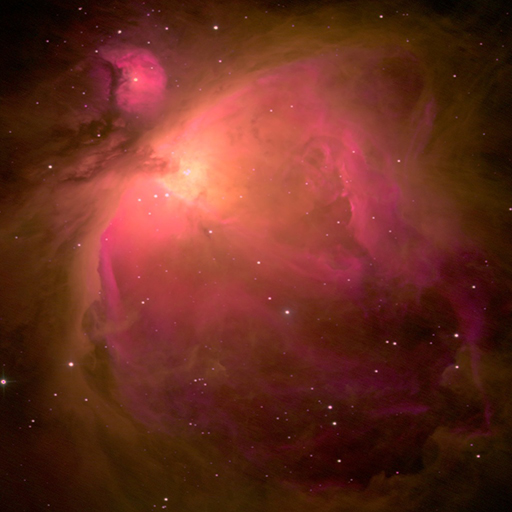3.4 Using equatorial coordinates to locate objects
In addition to giving you an accurate view of the sky from any location, on any date and at any time, Stellarium is fundamentally a map of the night sky or a star chart.
You can therefore use Stellarium to find a specific object that you are interested in observing, and to determine whether it is visible or observable when you want it to be. This will be useful in planning your observations with COAST.
If you know the RA and Dec coordinates of a particular object, you can use the Equatorial grid in Stellarium to locate it. As an example, let’s try to find the Great Orion Nebula. This has a right ascension (RA) coordinate of 5h 35m and a declination (Dec) coordinate of – 5° 23’ (the negative value of the Declination coordinate indicates that the nebula is below the celestial equator).
Activity 7 Locating objects using equatorial coordinates
Open Stellarium and set the time and date to 20:00 on 21st December. Make sure that you have the location set to the Teide observatory.
- Adjust the display by dragging until you are looking east (red ‘E’ cardinal point marker on the horizon).
What constellation can you see directly above the Eastern horizon?
Answer
You should see the constellation of Orion. As viewed from Tenerife, Orion appears tilted on its side with the belt of three stars forming a more or less vertical line.
- To locate the nebula, turn on the equatorial grid and look for the RA lines labelled ‘5h’ and ‘6h’. You may need to zoom in a bit to see the labels. You can zoom using the + and – keys or the mouse wheel. On the mobile version, there are circular + and – buttons that you can use to zoom in and out.
- Since the nebula has an RA coordinate of 5h 35m it will lie approximately half-way between the ‘5h’ and “‘6h’ lines. Now look for the Declination line labelled “-5°” and follow it until it crosses the zone between the ‘5h’ and ‘6h’ lines. Since the Declination coordinate of the nebula is –5° 23’ it will be just below the -5° line.
- Once you have located the correct area, zoom in using the + key or button to find the nebula. More coordinate lines will appear as you zoom in, allowing you to pinpoint the exact location.
The desktop (and laptop) computer version of Stellarium also has a search tool that is really useful if you have the name or catalogue number of an object that you are interested in.
The search tool is in the main menu that appears when you move your mouse to the far left of the screen and is represented by a magnifying glass. In the Search window that appears type the name of the object you are looking for and press the magnifying glass symbol.
Stellarium will then take you to the object you are looking for and centre it on the screen.
[The search option may not be available on mobile versions of Stellarium but you can still find an object by using its equatorial RA and Dec coordinates.]

